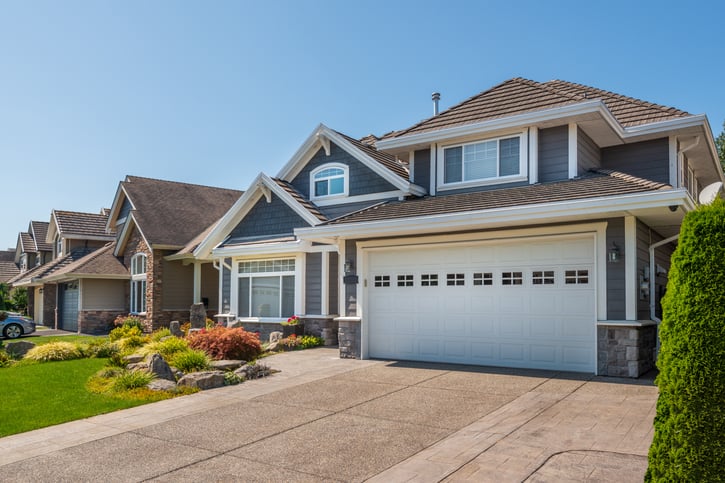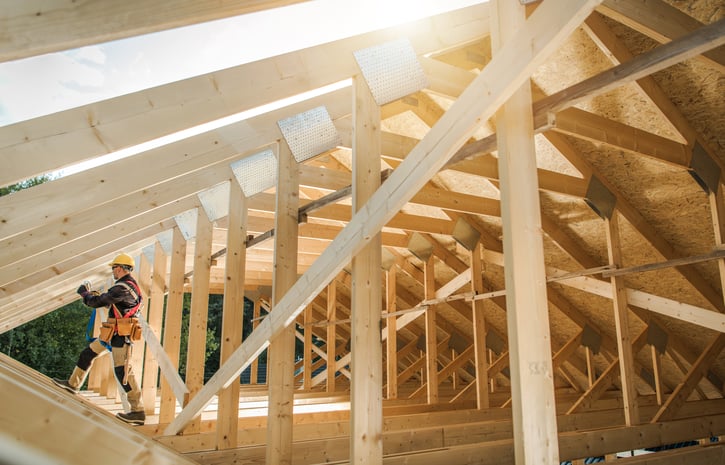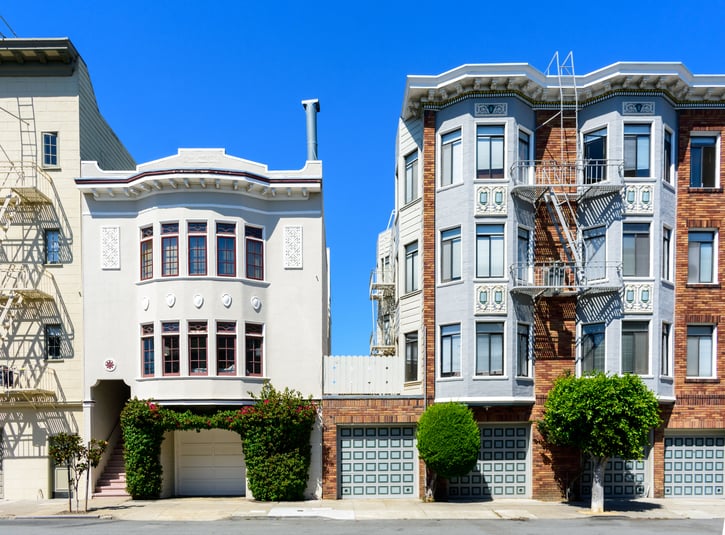Glossary
Glossary
Glossary
Are you new to the world of real estate investing? Confused by all the new vocabulary there is to learn?
Don’t panic! Sometimes it can be difficult to decipher the A-Z of acronyms and jargon the real estate industry uses on a daily basis.
The good news is, here at WeLend we’ve prepared a glossary of some of the most commonly used terms in real estate investing and multifamily investment for you to refer back to whenever you need it. Keep reading to learn more!
When it comes to fixing and flipping, which we’ll define further down the list, ARV stands for “after repair value.” This term is used to refer to the projected value of a property after it has been fully renovated.
A bridge loan is a short-duration loan that borrowers use to purchase or refinance properties. Bridge loans are often used to quickly purchase a property that the borrower will then refinance with a bank. Hence the term “bridge loan”.
Bridge loans are secured by a lien on one or more real estate properties.
Contrary to popular belief, this term is not just an expression for use in cold weather 🥶. In real estate investing, BRRRR stands for buy, rehab, rent, refinance, repeat.
This acronym describes an investment cycle that applies to real estate investing. Coined by real estate investor David Greene, BRRRR is usually used to describe a long-term strategy for acquiring and holding a portfolio of residential properties.
You can find a comprehensive list of the advantages of using the BRRRR method on our website.
This term refers to a long-term real estate investment strategy in which the investor buys a property with the intention of renting the property and holding onto it for the long term.
During this extended period of time, the investor typically rents out the property with the ultimate goal of keeping the asset for the long term. If investors can afford it, this strategy is great for generating cash flow in the short term and reaping the long-term benefits.

Short for capitalization rate, this term is used to predict how long it will take for a real estate investment to pay for itself over time. To determine a cap rate, you take a property’s net operating income - all the revenue for the property minus operational expenses - and divide it by the property's current market value.
Cap rates vary from region to region. They typically range from 5% to 10%. A real estate property with a 5% Capitalization rate will take 20 years for the asset to pay for itself. A real estate property with a 10% Capitalization rate will take 20 years for the asset to pay for itself.
Capex is short for capital expenditures. This is the amount that investors anticipate it will cost to renovate a property. This may include repainting a house or even adding a vertical or horizontal extension to the property.
Capital gains tax applies to profits from the sale of an asset held for more than a year, this is referred to as "long-term capital gains." The rates range between 0%, 15%, or 20%, depending on the taxpayer's tax bracket for that year.
On the other hand, short-term capital gains tax relates to assets held for a year or less - they are taxed as ordinary income. For most, that is a higher tax rate than the capital gains rate.
This term refers to a type of mortgage in which the borrower is pulling out capital by replacing their current mortgage with a new mortgage that is larger in size.
Often, the new mortgage will provide better terms for the borrower including a lower interest rate.
Closing costs are the expenses that buyers incur when purchasing a property.
These include appraisal fees, title insurance, surveys, origination fees, attorney fees, and more!
CMA stands for comparative market analysis. There are several online tools that will offer this for you. It helps investors estimate a home’s value based on the price of similar properties in the area. Real estate agents often use CMAs to set listing prices.
It is a short-term loan, generally running from 18 to 36 months. Its purpose is to cover the construction costs related to a building/renovating a property.

CRE simply stands for Commercial Real Estate. This covers all types of real estate related to businesses or organizations, with no link at all to residential property.
Equity refers to the ownership of assets. They might have debt or other liabilities attached to them. In accounting, equity can be estimated by subtracting liabilities from the total value of the assets.
It is an investment strategy that involves purchasing a typically distressed property, adding value — usually by renovating — it and selling it for a profit as quickly as possible.
FMV stands for Fair Market Value and is the value at which a real estate asset would sell on the open market.
A real estate foreclosure is a legal process that occurs when borrowers can no longer afford to pay their mortgage payments. Therefore the lender, usually a bank, initiates a forced sale of the property.
Foreclosure properties are often in demand among fix and flippers as they can often be bought at bargain prices at auctions.
This acronym stands for “for sale by owner”. It is a category under which owners can list a house for sale if they are not using a listing agent or a broker.
The “GRI” status stands for a Graduate of the Realtors Institute. It is a designation awarded by the National Association of REALTORS to a real estate professional who has made the commitment to provide a high level of professional services by securing a strong educational foundation.
GRM stands for “gross rent multiplier.” GRM is the ratio of the price of a real estate investment to its annual rental income before accounting for expenses such as property taxes, insurance, and utilities; GRM is the number of years the property would take to pay for itself in gross rent received.
Gross rental yield is annual rental income divided by the value of the property, multiplied by 100.
The total property value includes the price of the property as well as closing costs and renovation costs. This shows investors what percentage of the property purchase price that they could earn on rent per year.
The internal rate of return helps investors estimate how much they will profit from a particular investment. This is done by predicting how much returns are expected to grow per year as a percentage.
This financial analysis metric is calculated using the following formula:
In real estate, ITV stands for the ‘investment to value ratio’. As a percentage, it tells the investor the likelihood of getting their money back in the event the payor defaults on payments.
Multifamily refers to any building that contains 5 or more residential units. A true multifamily building does not contain any retail or commercial component.
The net operating income is a calculation used to determine how much income a property will generate. It’s the value of the property’s revenue minus all operating expenses.
PITI stands for ‘principal, interest, taxes, and insurance’, which compose a mortgage payment. Mortgage lenders generally require the PITI to be less than or the same as 28% of the gross monthly income of a borrower.
This is an evaluation carried out by a real estate appraiser on a property to calculate its current market value or ARV.
A real estate joint venture is a term used to describe what happens when two or more individuals partner up to work on a real estate investment.
In real estate, an LLC refers to an established legal entity that investors can use to invest in real estate instead of investing on their own behalf. This protects them from personal liability.
A real estate trust is a company that owns, operates, or finances real estate assets held for the purposes of generating income.
A real estate wholesaler is a person who gets a property under contract and then assigns the contract to a third-party buyer. The buyer closes on the purchase and pays the wholesaler an assignment fee.
The acronym REO stands for “real estate owned.” It is used to describe foreclosure properties owned by a lender.

A type of property interest referring to the “space” above a property. Generally, developers purchase air rights from the neighboring buildings and transfer them to a property in order to build more floors. “The developer bought and transferred 20,000 SF in air rights to his property”
A sophisticated way to describe a property. “Where is the Asset located?”
Section 8, Rent-stabilized housing and Rent-control. These are all forms of government-subsidized housing. The tenant generally pays a portion of the monthly rent and the government writes a check to the landlord for the balance of the monthly rent.
A way to describe interest rate and or fees.
1% of the loan amount = 1 Point = 100 basis points or 100 bps.
Example: A broker says “throw me 50 bps”. A loan officer says: I can shave 100 bps off the rate.
Capital expenditure budget - this refers to the total renovation budget for a value-add property.
The total amount of capital invested in a real estate deal or project. In Multifamily real estate, these “stacks” typically include: common equity, preferred equity, senior debt, mezzanine debt or preferred equity.
When a loan has passed all underwriting. Once the loan is CTC, we put the closing date for the loan on the calendar.
A form of ownership in a building that is held by ordinary owners/investors. Preferred equity is considered senior to common equity.
The generally accessible areas are found on each floor of a multifamily building such as mechanical rooms, elevator lobbies and public corridors that are available for use by all tenants on that floor.
A building that is changed from one use to another (i.e., an office building that is converted to a multifamily building).
Space being converted is removed from current inventory and included in the under-construction category for the planned future use (i.e., an office building being converted to an apartment building will be removed from office inventory and included under apartment space, or number of units, under construction).
The DD period is usually the first 10-30 days of a contract period. The DD period is the period that the buyer has to do research on the property to find any issues. As a lender, we must perform our due diligence (DD) on every loan to determine if there is any fraud, title issues or other legal issues that would prevent us from doing a loan.
Infill is the development of one or more buildings on underutilized land situated between existing buildings. Infill development is typically done in dense environments where land is scarce. The slightly broader term “land-recycling” is sometimes used.
A building or site that involves teardown and rebuilding of most—if not all— structures on that site. This change typically occurs in sought-after areas that are usually well located, where buildings have become unattractive or obsolete, or where there is a demand for different uses.
Hard costs include all of the materials that go into the physical construction or renovation of a space, such as building walls, electrical, plumbing, appliances, flooring, etc. Hard costs also the labor that goes into the construction. Hard costs will likely make up the majority of project costs – about 90% to 95% of the total project cost
Soft costs include all of the planning and permitting costs associated with a renovation project. A typical soft cost budget is about 5% to 10% of the total project cost.
A document containing details about a property and proforma financials. An OM is put together by the sales broker who is representing a seller.
IO means Interest-Only payments. All of our bridge loans are IO payments. Many borrowers prefer IO payments because they are less money out of pocket on a monthly basis when compared to P+I Payments.
The borrower’s monthly payment is composed of both a fraction of the principal loan balance and interest payment.
A synonym for contract.
The gross operating income equals the property's actual annual gross scheduled income less vacancy and credit loss. GOI is not the property's potential income but represents instead the actual income that you collect every year.
NOI is simply the GOI minus the property expenses and taxes. NOI is the total amount of income left over after paying all the expenses.
This is a way to refer to the income and expense reports for the last few years. An investor wants to see the historicals to determine whether the property is a good investment.
Pro-forma means projected. So Pro-forma financials refer to the income and expense projections for an asset
This is a report showing all of the actual income and all of the actual expenses for a property.
A report that shows various details for each unit in a multifamily property. These details include each unit number, the tenant name, monthly rent, etc. This report does not include the actual income, but only the projected monthly income for each unit.
A building that is fully rented is also called a stabilized asset. The term is derived from being “stable”.
Real estate projects that are built around transit to maximize access to shared transportation modes. Typically, the TOD project is dense and walkable, and it includes a mix of uses such as residential, office, retail, hotel and entertainment.
A lease agreement for a commercial or multifamily property whereby the tenant pays all taxes, maintenance and property insurance as well as all operating costs associated with the tenant’s occupancy. The landlord is responsible for the roof and the structure. In general, McDonalds and other major restaurants/retail chains use NNN leases.
The total amount of cash, cryptocurrency, stocks and other easily sold securities that the borrower has available.
The amount of money that a Sponsor is worth. The general formula is Assets - Liabilities = Net worth
A list of all of the real estate properties that a Sponsor owns including the address, existing debt, units and other information.
A report that states all of the assets and liabilities of a Sponsor. A PFS will show a borrower's Net worth and liquidity. Some Sponsors will include their SREO in their PFS. Meaning that the PFS may be utilized at times to show all of the real estate assets that a Sponsor owns.
A Phase I Environmental Site Assessment, commonly referred to as an ESA, or Phase I ESA, is completed to research if current or historical property uses have impacted the soil or groundwater beneath the property and could pose a threat to the environment and/or human health. If these issues are found, it presents a potential liability for the lender and/or owner, as well as affecting the value of the property.
When a Phase I Environmental Site Assessment (ESA) identifies a potential environmental issue, lenders require an evaluation of the potential impacts by performing Phase II Environmental Testing. A Phase II ESA is a subsurface investigation that tests soil, soil gas and/or groundwater to identify sources of environmental impacts.
A profit distribution preference whereby profits, either from an Asset’s operations, sale, or refinance, are distributed to one class of equity before another until a certain rate of return on the initial investment is reached.
Preferred equity is an alternate form of financing that is provided either instead of, or subordinate to, mezzanine financing in commercial real estate transactions. It is an equity investment in a joint venture, which is, typically, a direct or indirect owner of a property owning entity.
A mezzanine loan is additional debt an investor will take on to finance an acquisition or expansion project. They come in second position behind senior liens. We don’t allow borrowers to get Mezzanine loans behind our loans.
A senior lien is considered to be the first and primary mortgage on a property. Typically, this is the original loan amount and is secured by the value of the property. This amount will be paid first and only tax obligations can potentially interfere. We only provide senior loans.
The ownership structure of a company including all members and their respective ownership stake.
Derived from the CMBS market, this term is a fancy way to describe a Prepayment Penalty. It is very important to MF borrowers that we have no Yield Maintenance/Prepayment penalty. Always mention that we have no Yield maintenance or Prepayment penalty to prospective MF borrowers!
The use of borrowed funds to help finance an investment, to increase either the potential rate of return or one’s purchasing power. For example, “borrower wants to max out the leverage”
We’ve here to help educate and guide our customers every step of the way, as your success is our success. Read our up to date articles on residential private money lending in New York and across the country for useful advice and information.
We Lend is a private money lender based in New York with a nationwide reach, focused on servicing real estate investors by providing quick and low cost capital on their investment properties.
Copyright © 2021 We Lend LLC. All Right Reserved